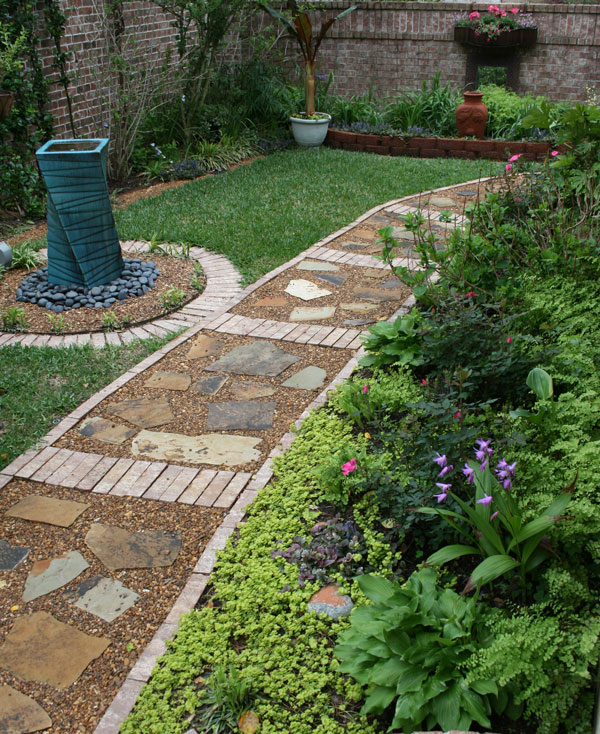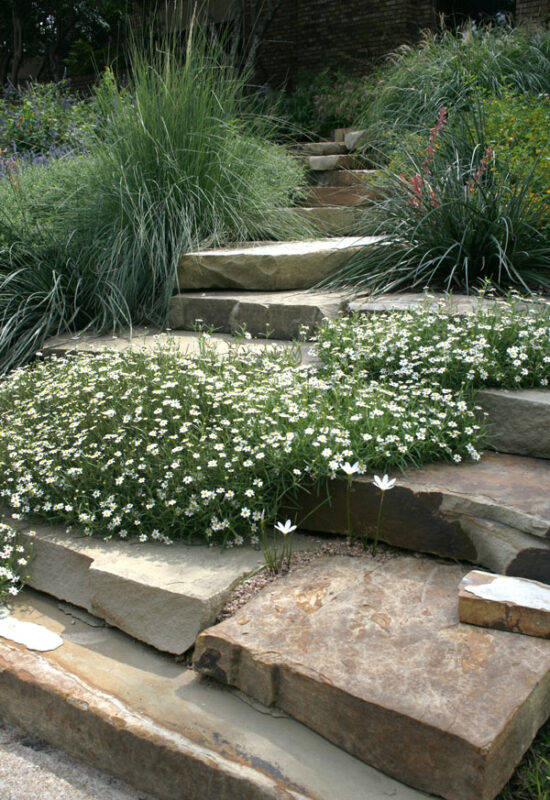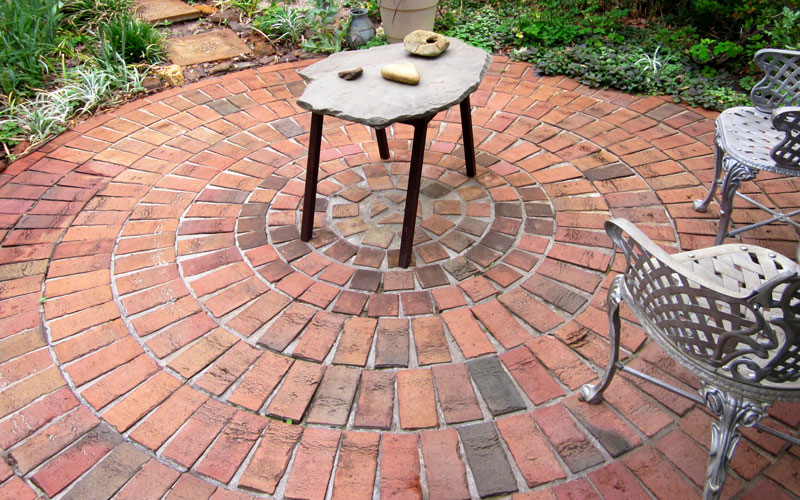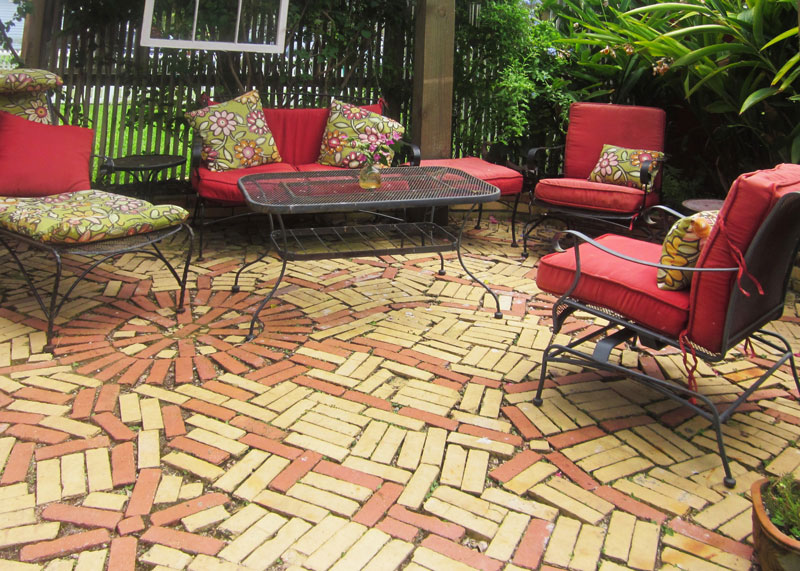Paving the way – by Diane Morey Sitton
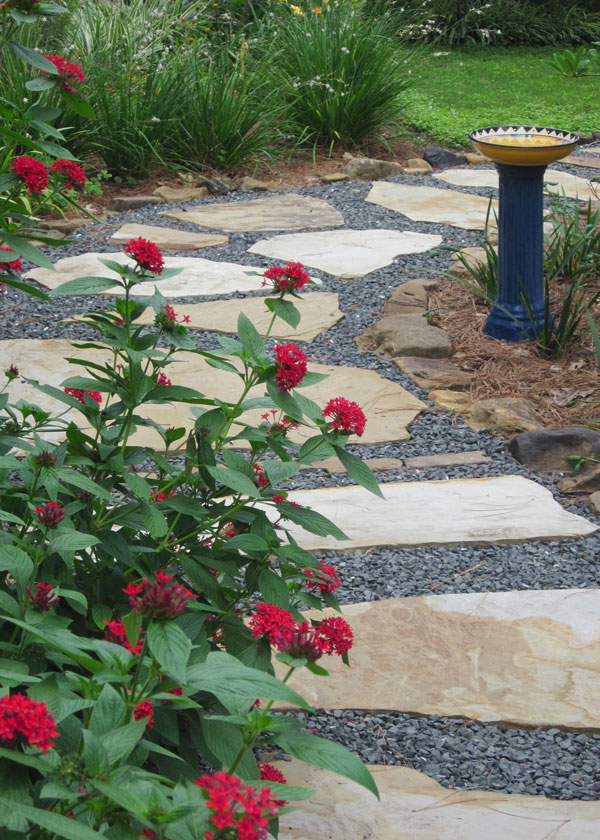
The velvety allure of stepping stones framed with creeping thyme, the intricacies of a garden path laid with pebble mosaic, slabs of native stone stair-stepping up a grassy slope; when it comes to decorating gardens, what’s underfoot not only helps set style and tone, but it can become the star of the show.
The opportunity for creativity is vast, even when you use common materials. Instead of lining up square stepping stones to make a path or patio floor, set them corner-to-corner in a diamond pattern. Fill in with mondograss, creeping thyme or other low-growing plants. Use bricks to design geometric compositions or defy bricks’ rectangular shapes by using them to fashion swirls and scrolls. Install wood decking diagonally or basket-weave-style. Design an inlay.
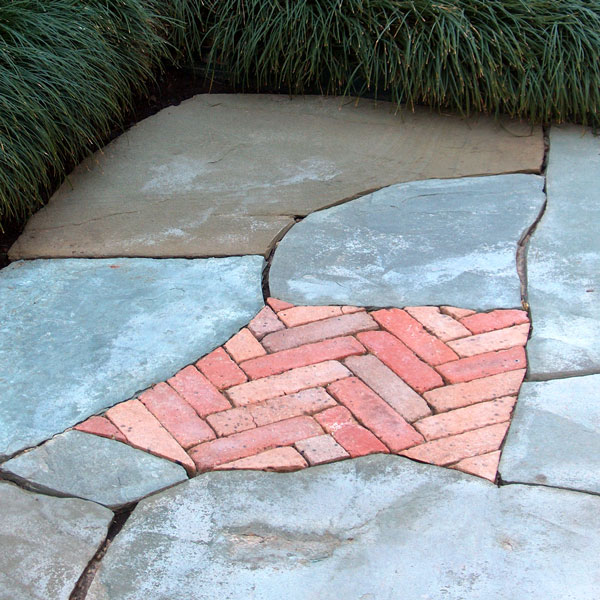
Combine materials to create contrast and interest. What could be more inviting than a footbridge consisting of wood platforms punctuated with flat-topped boulders. Or, strengthen a color theme by positioning brightly-colored tiles amid bricks. Earth-toned pavers pair well with bricks, especially red bricks. Limestone slabs set amid black pebbles create contemporary flair. Terra cotta stepping stones positioned in a checkerboard pattern atop gray pebbles intensifies dimension.
When situated underfoot, unique, unusual, and one-of-a-kind items generate interest and surprise. Who wouldn’t take a second glance at sculptured clay faces glazing up from a flower bed beside a sidewalk or embedded in the walkway itself! What gardener could resist stepping stones that resemble flowers or dragonflies. Better still, craft your own mosaic stepping stones. Start with ready-made concrete pavers. Use tile adhesive to attach pieces of broken pottery, craft marbles, and small glass tiles. Add old keys, trinkets and flat garden collectibles. And, finally, hats off to the gardener who created a short path using boards stenciled with the names of seed companies and plants (as seen online.)
Generally speaking, what’s underfoot should be smooth (free of bumps and snags), stable, and carefully spaced to allow for an even gait. Whether elegant, whimsical or rustic, consider how the surface will change from season to season, i.e., from wet to dry to icy. Will it require regular maintenance or will it age with grace.
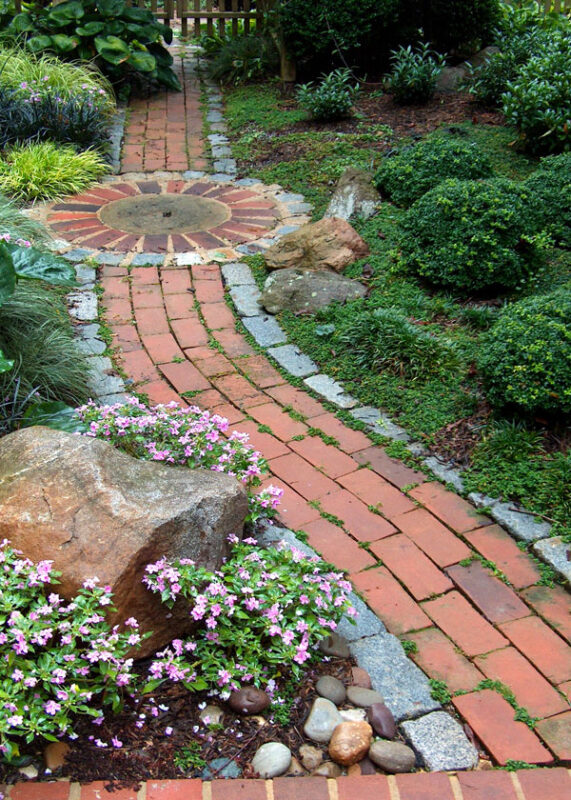
What’s underfoot needn’t be ordinary. With planning and creativity you can pave the way to a functional and memorable focal point.
